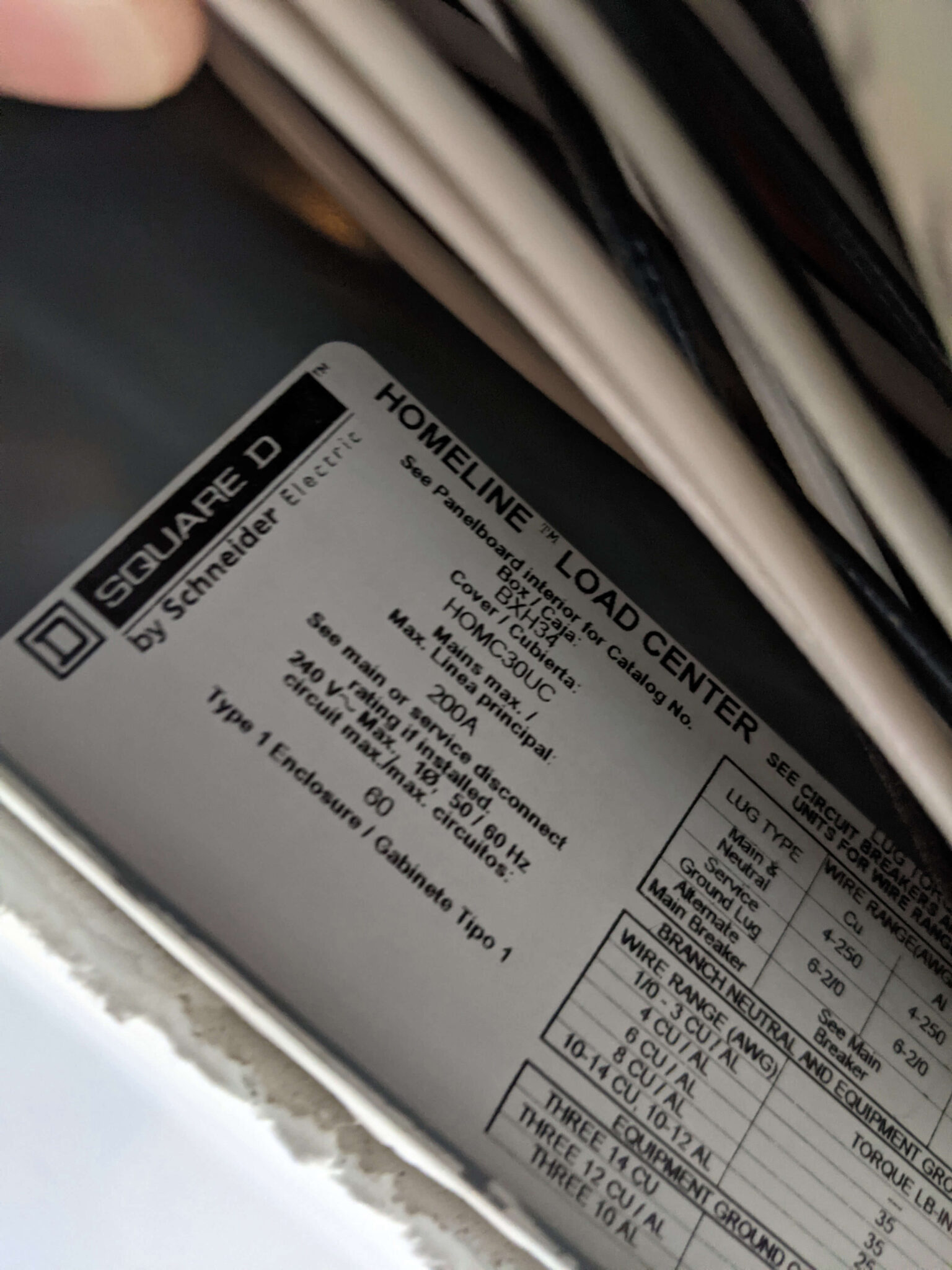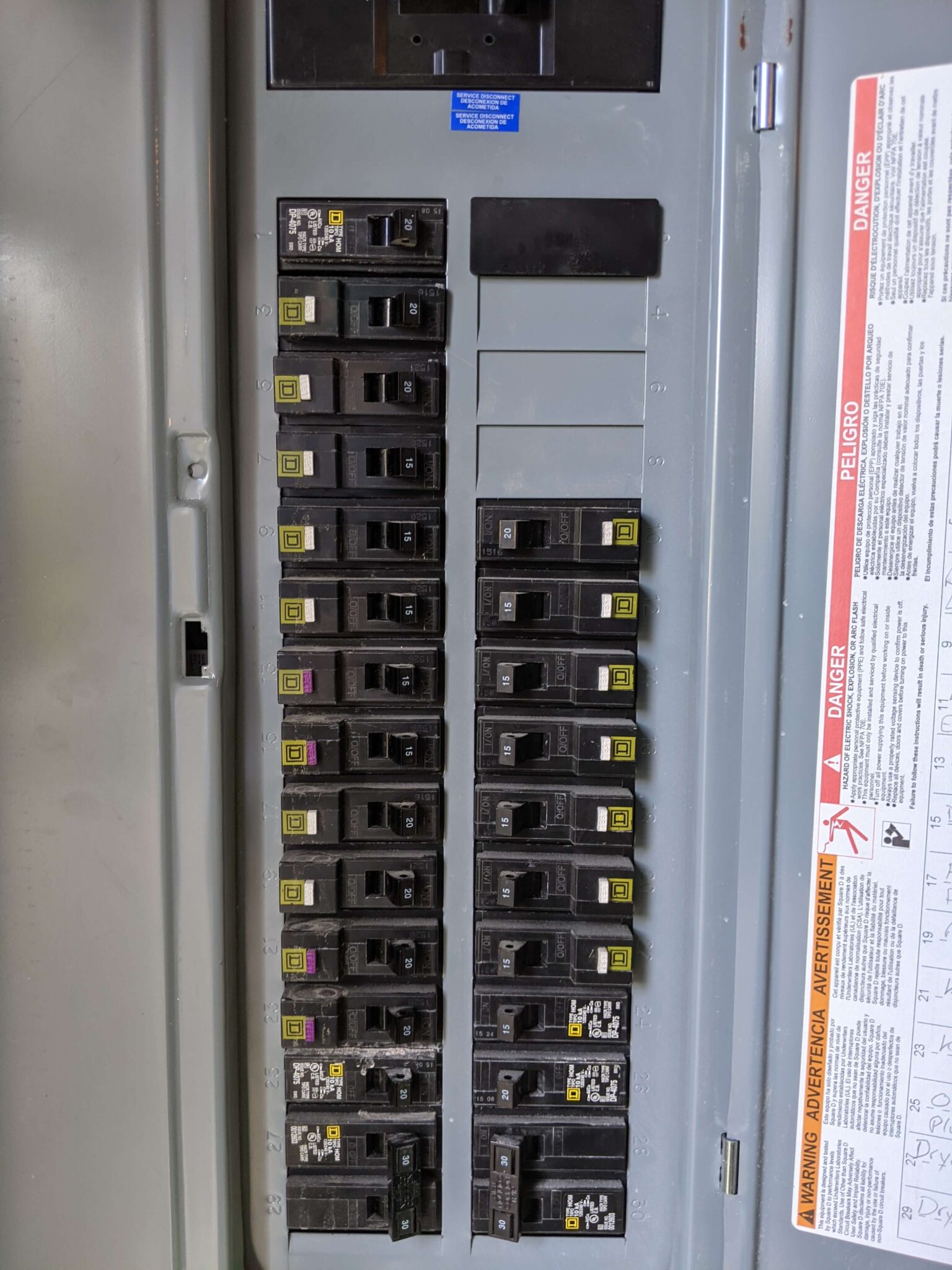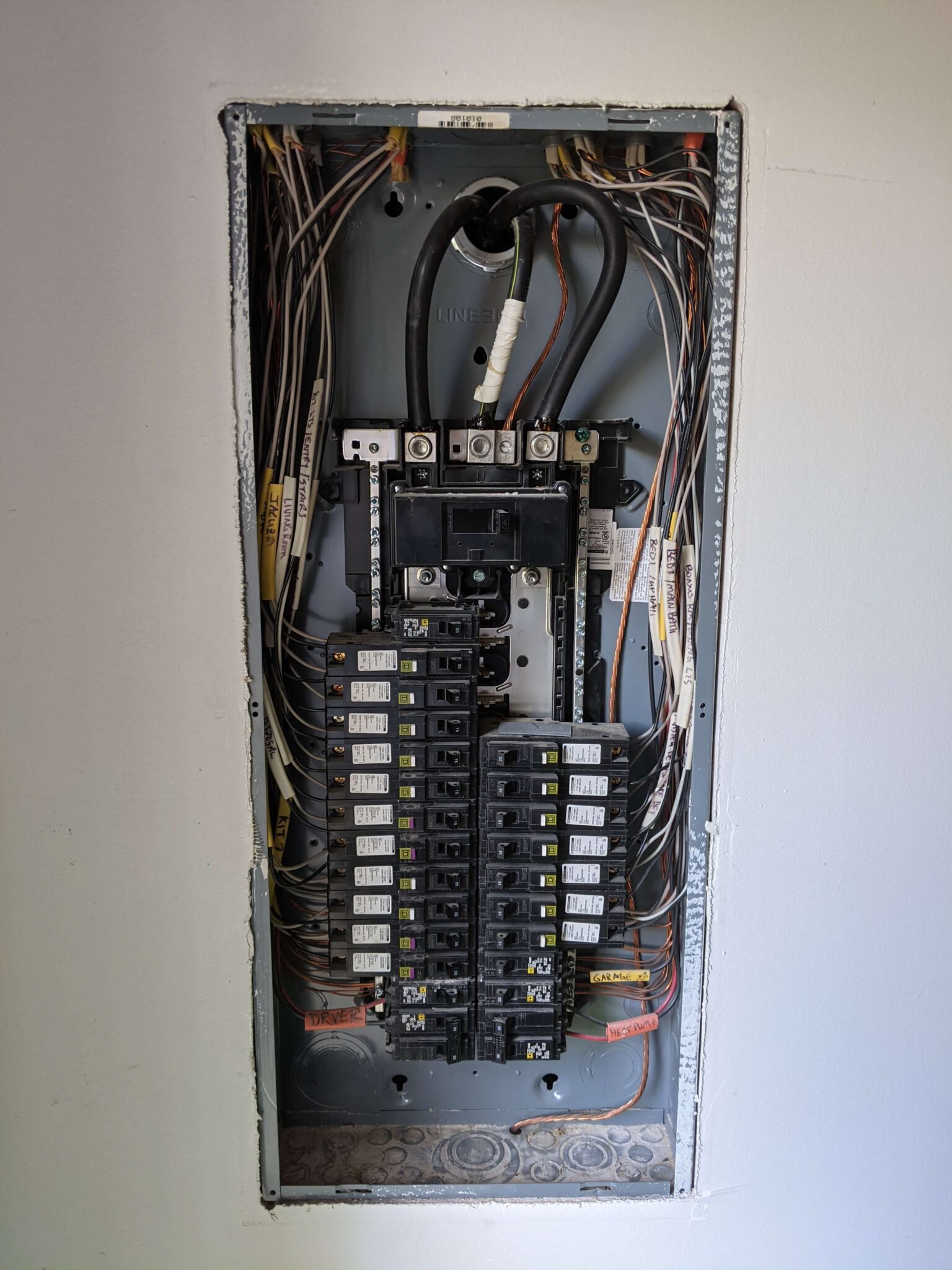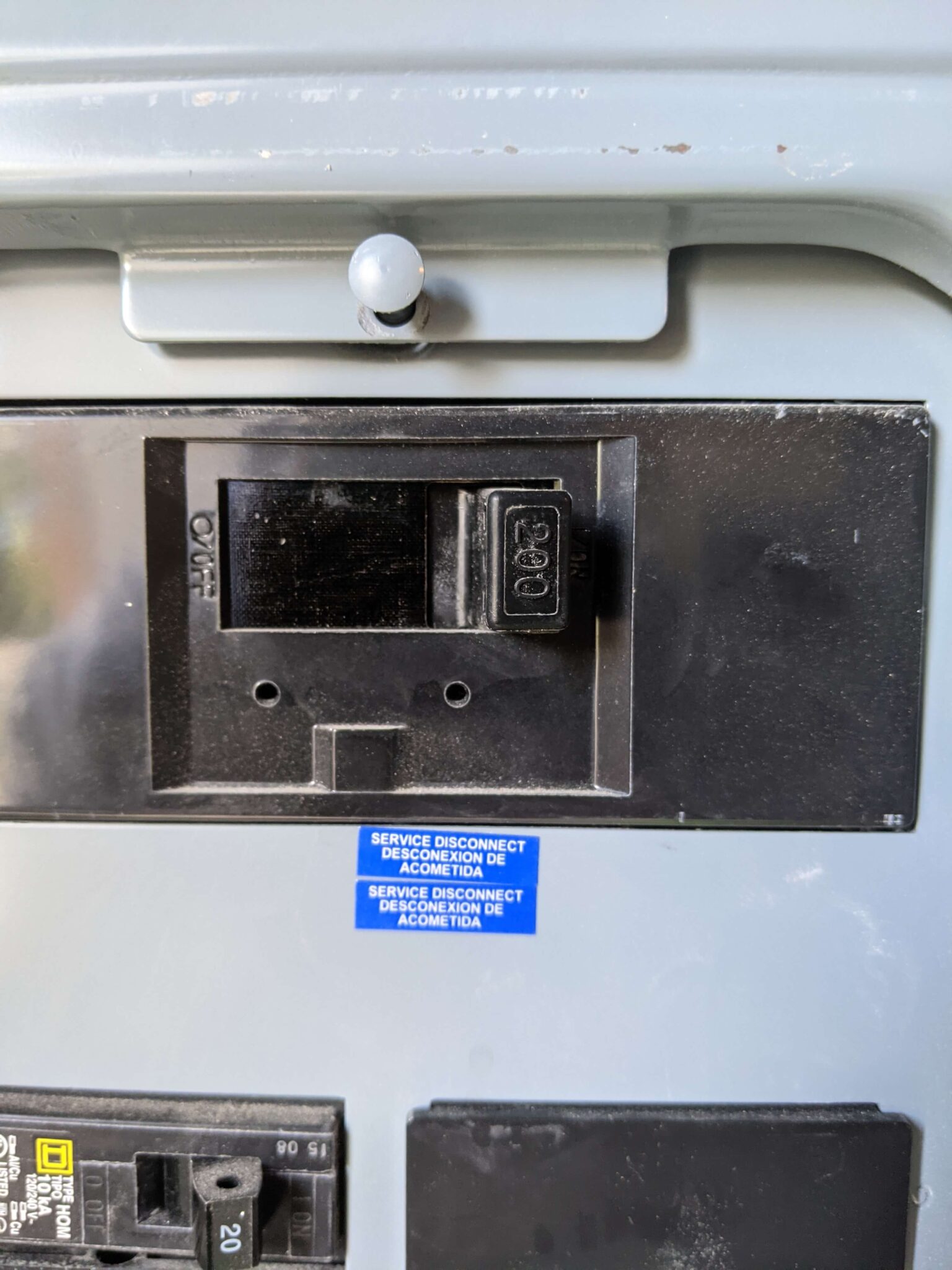Point of Interconnection
A term used for where your solar PV system connects to your service, the electrical panel, breaker box, circuit board, load center, etc., is where your electrical loads connect to the grid. Here, breakers safely draw electricity delivered from the grid into your home. Let’s learn more about this vital equipment that electrifies our life!
The parts that make up your panel
Electrical panels come in various ratings and sizes that determine the number of breakers and loads that electrically tie into the board.

Panel rating/bus-rating
The panel or bus rating limits the total ampacity of the panel. In this picture a 200A rated mains will allow for a 200A main breaker. This value is what we use to calculate the size of a backfeed breaker from a solar inverter that we can install. Panel ratings include 100, 200, and 225 amps.

Space in the panel
The spaces on the electrical panel determine the physical size of the box and how many breakers go inside it. Electrical panels come in 12, 20, and 30-circuit spaces. This picture shows breaker spaces in the top right and a breaker cover from when a breaker was installed but removed and covered.

Circuit breakers
It is an electrical switch designed to protect an electrical circuit from damage caused by a short circuit. Breakers come in single, two, three, and quad poles. Each pole takes up space in the panel. Sometimes a single pole breaker can have room for two circuits. In this photo, you can see how breakers are attached to one of two bus bars; at the bottom, you can see two-pole breakers for larger loads such as a heat pump.

Main breaker
The main circuit breaker controls the electricity flow from your two main wires to your hot bus bars. When the main breaker trip, it disrupts the electrical circuit reaching the rest of the breakers in the house. This 200A main breaker is very common for residential homes.
When to upgrade your electrical panel
Electricians consider the rating of the main breaker, bus, and how many available breaker slots are free to determine if there is enough room to add new loads to the panel. Homes typically need to upgrade their electrical panel only when homeowners keep adding loads to their panel, which exceeds the “load calculations” for what that panel can handle. National Electrical Code (NEC) has load calculation rules on how many loads residential/commercial electrical panels can have. We often require homeowners to upgrade their panel because the current layout has too many loads and is violating the code, and for us to get an inspection passed, we need to resolve that first.



